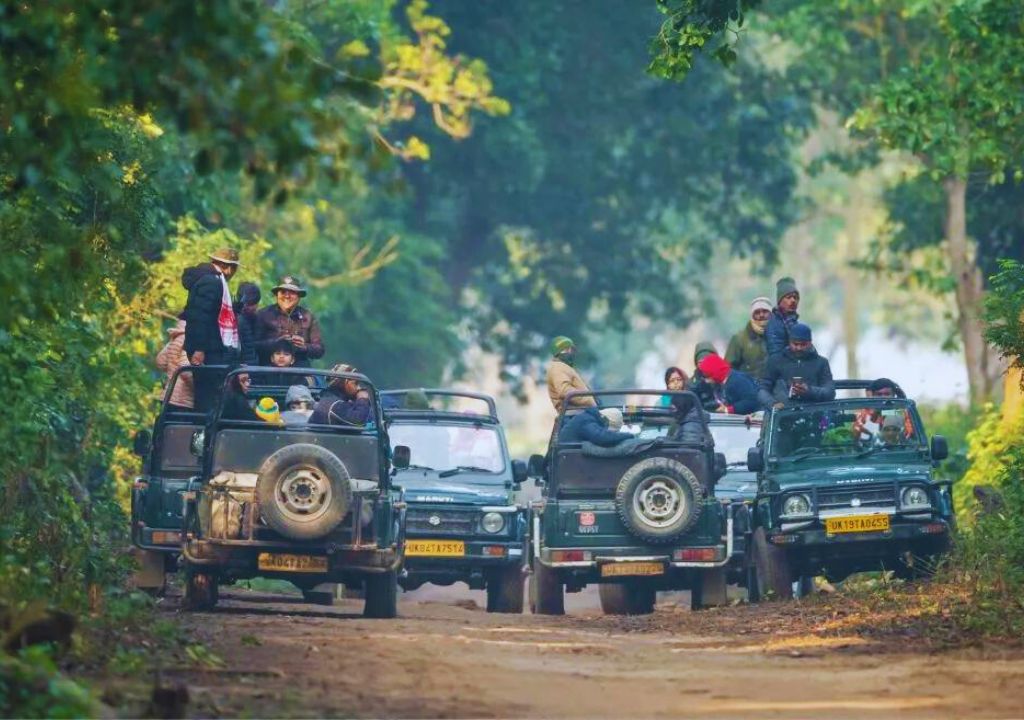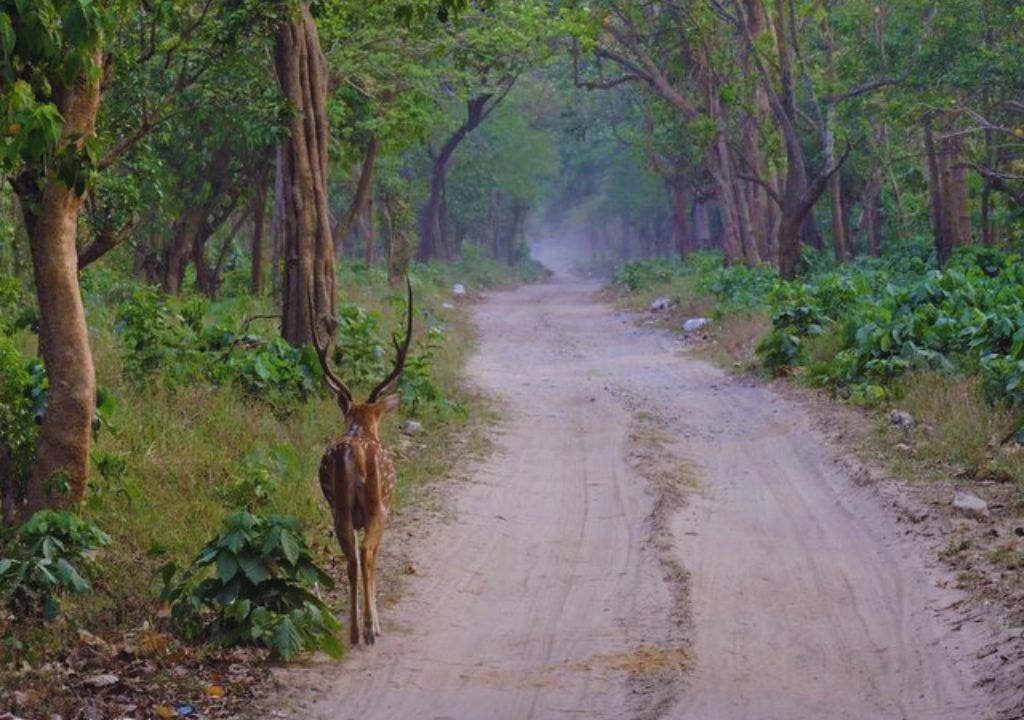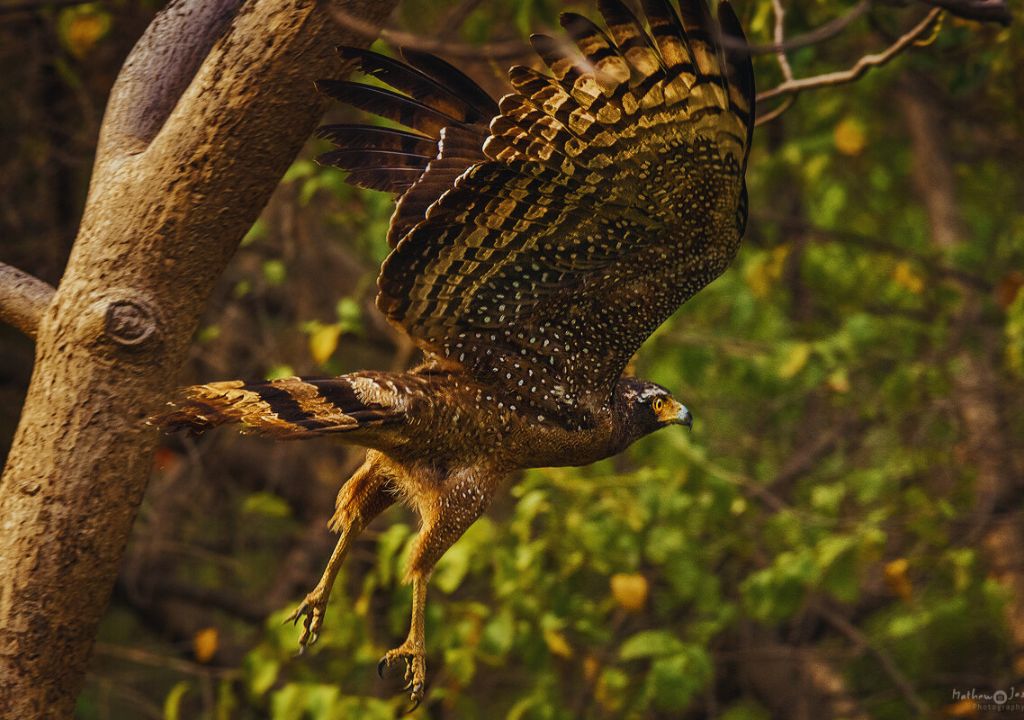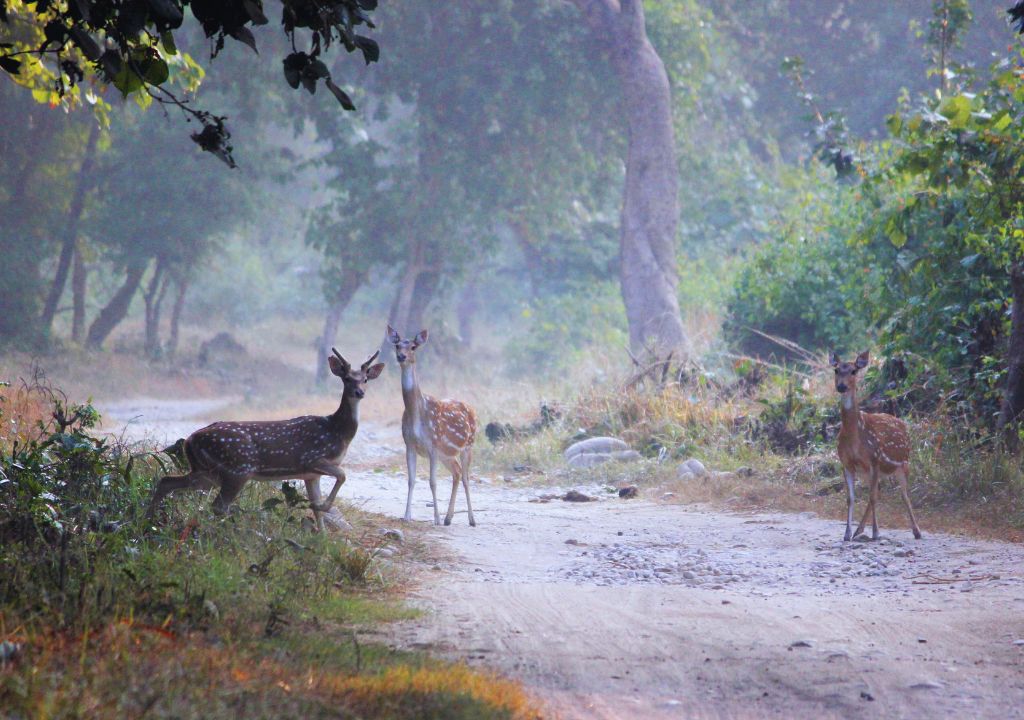Dense Forests of Rajaji National Park- Nestled in the lap of nature, Rajaji National Park stands as a testament to the splendor of wilderness. This vast expanse of pristine beauty is a sanctuary for both wildlife enthusiasts and nature lovers alike. As you step into this realm of tranquility, you’re immediately greeted by the embrace of dense forests that hold within them a world of biodiversity and wonder.
Exploring Rajaji National Park
Background and Location
Stretching across the Shivalik ranges of Uttarakhand in northern India, Rajaji National Park covers an impressive area that encompasses diverse ecosystems. Named after the revered freedom fighter C. Rajagopalachari, the park is a sanctuary for a wide variety of flora and fauna.
Biodiversity and Significance
Rajaji National Park is not just another wilderness; it’s a treasure trove of biodiversity. Its significance lies in being the abode of numerous rare and endangered species, making it a pivotal center for conservation efforts. The park’s existence is a testament to the delicate balance between man and nature.

The Enchanting Dense Forests
Rich Flora and Fauna
Dense forests, draped in a blanket of green, shelter an astounding variety of plant species. Tall sal trees, the dominant species, stand shoulder to shoulder with equally magnificent bamboo groves and chir pine trees. These lush woods house an array of wildlife, from the majestic elephant herds to the elusive big cats.
Ecosystem Services Provided by Dense Forests
Beyond their aesthetic charm, these dense forests provide invaluable ecosystem services. They regulate the local climate, purify the air we breathe, and mitigate the effects of natural disasters. The interconnected web of life in these forests ensures that every inhabitant plays a role in maintaining the delicate balance of nature.
Wildlife Diversity in the Forests
Majestic Elephants
Rajaji National Park is renowned for its thriving population of Asian elephants. The sight of these gentle giants moving gracefully through the forests is a sight to behold. As you venture deeper into the woods, you might be fortunate enough to witness their playful interactions and nurturing behavior.
Royal Bengal Tigers
The forests also harbor the elusive Royal Bengal tigers, symbols of strength and elegance. These apex predators roam their territories with regal authority, leaving behind awe-inspired hearts. While spotting one requires patience and luck, the mere knowledge of their presence adds an extra layer of excitement to your forest expedition.
Diverse Bird Species
The symphony of Rajaji’s dense forests is not complete without the melodies of its avian inhabitants. From the resplendent plumage of the Himalayan pheasants to the melodious tunes of songbirds, the park is a paradise for birdwatchers. Every rustle of leaves might hint at a hidden feathered gem.

Conservation Efforts and Challenges
Protecting Endangered Species
The dense forests are crucial for the survival of several endangered species. Conservationists and park authorities work tirelessly to protect these precious inhabitants from the threats of poaching and habitat loss. Efforts are underway to ensure a safer future for the park’s denizens.
Human-Wildlife Conflict
The coexistence of humans and wildlife brings forth its share of challenges. Encounters with elephants can result in conflicts that affect both parties. Finding a balance that preserves both human livelihoods and animal habitats is an ongoing endeavor.
Visiting the Forests
Ecotourism Opportunities
For those seeking an escape into nature’s embrace, Rajaji offers exceptional ecotourism opportunities. Walking trails and nature walks allow you to immerse yourself in the serene surroundings, connecting with the wilderness on a personal level.
Safari Experiences
Embarking on a safari through the dense forests is an adventure of its own. The thrill of spotting a variety of animals in their natural habitats, from deer grazing in clearings to langurs leaping from tree to tree, is an experience that etches itself into your memory.

Mysteries of the Forests
Folklore and Legends
Dense forests have an enchanting way of weaving themselves into the fabric of local culture. Tales of mythical creatures and ancient spirits add an aura of mystique to the woods. Exploring these legends opens a window into the deep-rooted connection between humans and the wilderness.
Spiritual Significance
For many, the dense forests of Rajaji hold a spiritual significance. The serene ambiance and the sense of being surrounded by nature’s grandeur provide a setting conducive to meditation and introspection. It’s a place where one can seek solace and connect with a higher power.
Captivating Sounds of Nature
Symphony of Wildlife
The dense forests come alive with the symphony of wildlife sounds. The melodious songs of birds, the calls of monkeys swinging through the trees, and the occasional roar of a big cat compose a harmonious cacophony that reverberates through the woods.
The tranquility of the Woods
Yet, amid the chorus of life, there are moments of profound tranquility. Sitting by a babbling brook or beneath a canopy of trees, you’re enveloped by a sense of calm that is both soothing and invigorating.

Threats to the Ecosystem
Deforestation Pressures
The allure of the forest’s resources can sometimes lead to unsustainable practices. Illegal logging and habitat destruction pose significant threats to the delicate balance of the ecosystem. The challenge lies in finding ways to meet human needs without compromising the well-being of the forest.
Invasive Species
Intrusive species that disrupt the native ecosystem can infiltrate the dense forests. These interlopers compete with indigenous flora and fauna, creating a ripple effect that can have far-reaching consequences.
Conclusion
The dense forests of Rajaji National Park are more than just a collection of trees; they are a living, breathing testament to the beauty and resilience of the natural world. As we navigate the challenges and opportunities of the modern age, preserving these forests becomes not just a responsibility, but a privilege. Whether you seek adventure, tranquility, or a deeper connection with nature, the dense forests of Rajaji welcome you with open arms, ready to reveal their secrets and stories to those who are willing to listen.
Frequently Asked Questions (FAQs)
1. Can I explore the dense forests of Rajaji National Park on my own?
While some areas may be accessible for independent exploration, it’s recommended to join guided tours or safaris to ensure safety and minimize the impact on the ecosystem.
2. Are there accommodations within or near the park?
Yes, there are accommodations ranging from forest lodges to eco-friendly resorts near the park entrance, providing a comfortable stay amid nature.
3. What is the best time to visit the dense forests of Rajaji National Park?
The park is open from November to June, with the winter months offering pleasant weather and better wildlife sightings.
4. Can I participate in conservation activities during my visit?
Yes, some ecotourism programs allow visitors to participate in conservation efforts, contributing to the preservation of the forests.
5. Are there any restrictions on photography and wildlife interaction?
While photography is allowed, it’s important to maintain a respectful distance from wildlife and adhere to park guidelines to ensure their well-being and safety.
